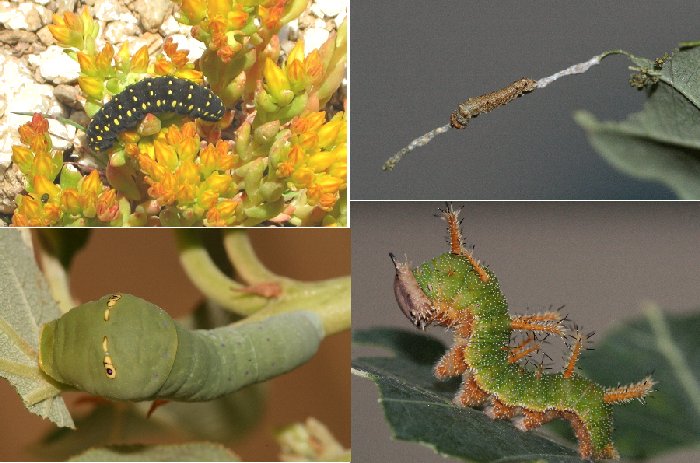Techniques and Setups
This section represents the substance of this website and is basically broken down into two broad disciplines which include how to obtain immatures--defined as eggs, larvae, or pupae--and how to care of them in order to get healthy adults. Butterfly rearing techniques and strategies will be reviewed by way of instructions, photos, and a few videos.
Although the beginning section of this site introduced some of these techniques as applicable to butterflies that are generally easy to raise, this section will provide much more detail.
Furthermore, the Taxa Specific section will demonstrate which of these techniques work well for specific butterfly taxa broken down to the species and subspecies level.
It is important to understand how caterpillars hatch from their eggs, feed on their host plant and go through the a series of molts called instars as they develop. More.
Techniques for Obtaining Immatures
- Butterfly Habitat (identifying and understanding where butterflies fly)
- Butterfly Identification (identifying butterflies in the field)
- Host Plant Identification (identifying butterfly caterpillar larval food plants in the field)
- Female Oviposition Techniques (how to get females to lay eggs in the lab)
- Handpairing Techniques (how to mate males to females; so that females can lay eggs in the lab)
- How to find eggs and caterpillars in the field
Techniques for Caring for Immatures
- How to care for eggs (ova)
- How to care for caterpillars (larvae)
- How to care for prepupae and pupae
- How can you tell when a last instar larva is ready to stop feeding and form a chrysalis
- How do you care for immatures that need to hibernate through winter (actual or simulated)
- What types of containers and equipment do you need
- What types of strategies are needed to break diapause after a cold treatment
- What can you do to avoid disease?
- What can you do to avoid diapause?
_________________________________________________________________________________





